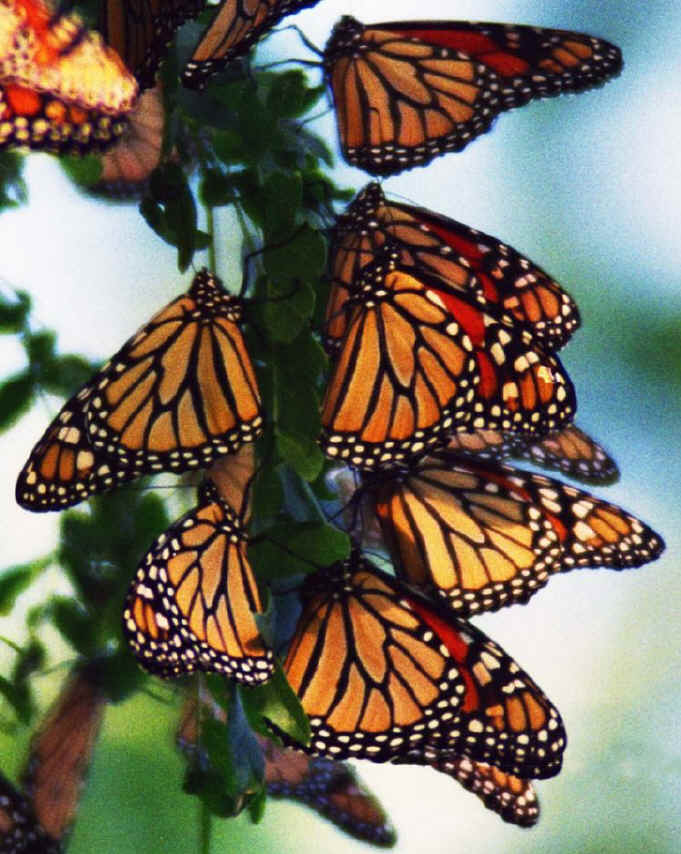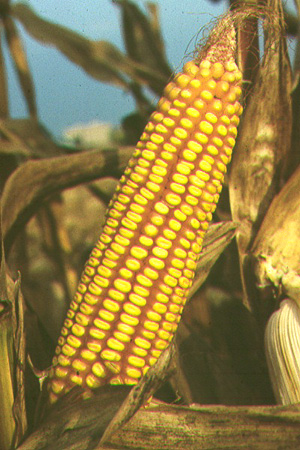
Monarch Butterflies
Picture courtesy of Philip and Patricia Rose
Mrs. Rose's Website
In May of 1999, a research group from Cornell University submitted a letter to Nature disclosing recent findings that pollen from transgenic Bacillus thuringiensis (Bt) corn crops harms monarch larvae (Danaus plexippus). (Losey et al., 1999) The study ignited a heated debate between advocates and opponents of genetically modified (GM) foods. One concern of GM crops has always been their potential impact on the surrounding environment and ecosystems, and this study suggested that Bt corn may pose a risk to organisms other than its target, the European corn borer (Ostrinia nubilalis). Many scientists criticized the methods of the Cornell research group, and were quick to design their own experiments to challenge the original data. Opponents of GM foods used the Nature article to confirm their claims that GM crops do indeed adversely affect the environment, and they pushed for a complete GM food ban. (Ament, 2000) In response to the public Bt/Butterfly debate, the U.S. Environmental Protection Agency (EPA) and the U.S. Department of Agriculture Agricultural Research Service (ARS) called for an extensive reevaluation of transgenic Bt crops before they renewed the Bt crop registration in 2001.(Sears et al., 2001) This site was created to provide an overview of Bt crops, discuss the implications of the original study that suggested that Bt crops were deleterious to monarch butterflies, and present the research following the original study that contributed to the current attitude on Bt crops.
Contact me: Leigh Anne Hoskins, lehoskins@davidson.edu
Last modified on 11 February, 2004
________________

